Connections
with the Phonograph
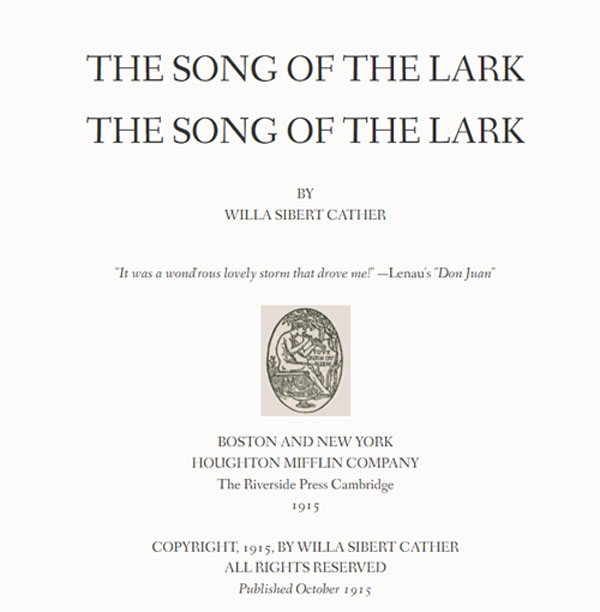
By Doug Boilesen, 2020
The Song of the Lark by Willa
Cather has only one phonograph in its story, however, there are
multiple phonograph connections because the prototype for Cather's
heroine, Thea Kronborg, was opera star Olive Fremstad and because
other songs of the period are referenced that were made into phonograph
records.
The Phonograph
The following text from The Song
of the Lark identifies the phonograph in the parlor which could
"let Thea speak for herself."
There, in her parlor, was the
phonograph that had come from Mr. Ottenburg last June, on Thea's
birthday; she had only to go in there and turn it on, and let
Thea speak for herself.
Olive Fremstad,
Prototype for Thea Kronborg in Song of the Lark
Willa Cather interviewed Olive Fremstad
in 1915 for her McClure's Magazine article "Three American
Singers" and the two became friends and exchanged letters for
nearly a decade. (1)
Besides starring on the opera stage
Fremstad made phonograph records and appeared in phonograph advertisements
which added her celebrity status, artistic reputation, and the prestige
of opera to promote the early phonograph and its records.
As the prototype for Thea Kronborg
in The Song of the Lark Fremstad provides phonograph connections
that can be made in Cather's story (even if some are two-degrees
of separation connections).
A 1911 Columbia advertisement exemplifies
what the phonograph industry was saying about recorded music of
the time, comparing an opera star's voice like Fremstad's and the
quality of the phonograph's recorded sound. Phonograph advertising
was consistent in its intent and conclusions, as seen in the following:
Fremstad's records are "a revelation of the amazing manner
in which the perfected Columbia process of recording reflects the
individual powers of the singer."
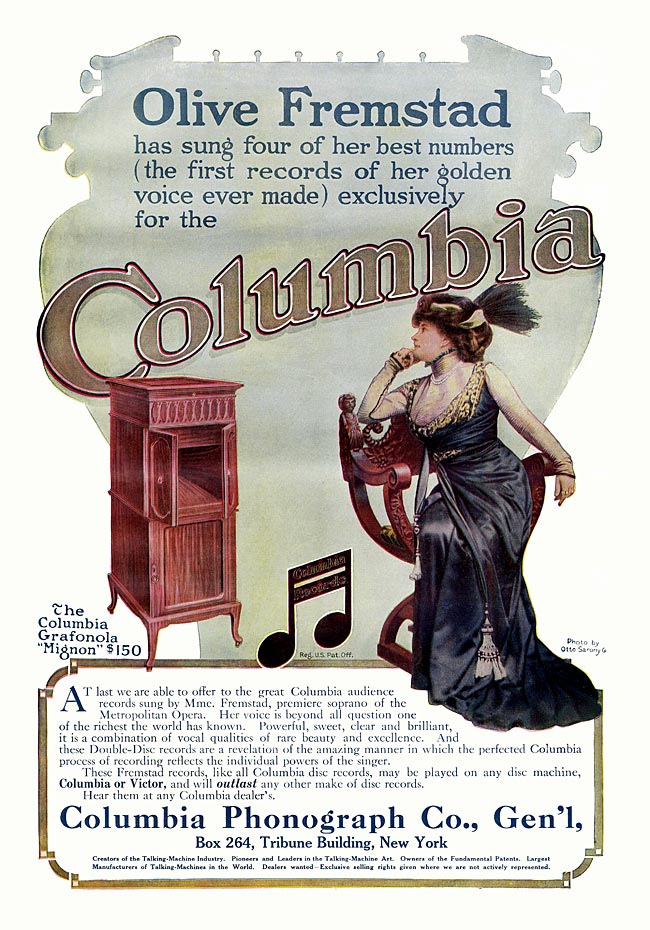
First records of Fremstad's
voice ever made exclusively for Columbia, Scientific American,
1911 (PM-1830).
In contrast to Columbia's
1911 promotion of Fremstad's recorded voice and "the amazing
manner in which the perfected Columbia process of recording"
was reflecting "the individual powers of the singer,"
Fremstad herself apparently was not happy with her recordings. The
Cather Scholarly Edition for The Song of the Lark includes
in Explanatory Note 1006 a brief history of the phonograph and Fremstad's
disappointment in the quality of recorded sound according to her
long-time secretary Mary Watkins Cushing.
1006. phonograph . . . lines on
metal disks: Invented by Thomas A. Edison in 1877, the first phonograph
employed cylinders covered in tinfoil on which indentations had
been made with a stylus. In the late 1880s Emile Berliner patented
a process by which sound grooves, or lines, were traced by a stylus
onto a flat disc. In early recordings the original soft wax master
disc was electroplated with metal to produce a negative master
that could be used to produce more copies, or records, which were
then played on a Gramophone. These commercial discs, initially
made of hard rubber and later of shellac resin and cotton or other
fiber, were turned by hand or a spring, and sound was increased
by flared horns. Fremstad made fifteen recordings for Columbia
in 1911 and 1912 but was so disappointed by the quality of the
reproductions that she refused to make additional recordings even
after techniques improved (Cushing 259-62). (2)
The Discography of American Recordings
(DAHR) identifies 23 recordings made by Fremstad for Columbia Records
between January 21,1911 and October 1, 1915. (3)
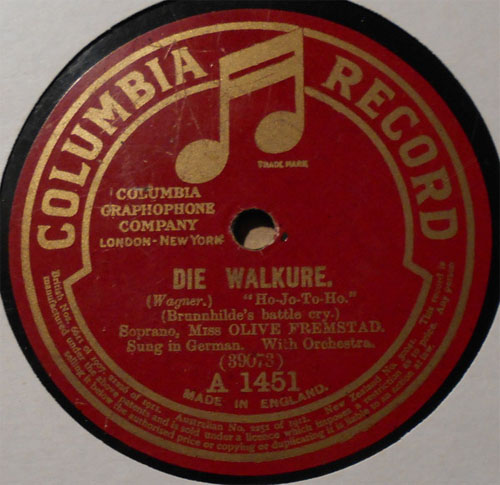
"Die Walkure,"
Sung by Olive Fremstad, Columbia Record No. A-1451 Recorded October
28, 1913.
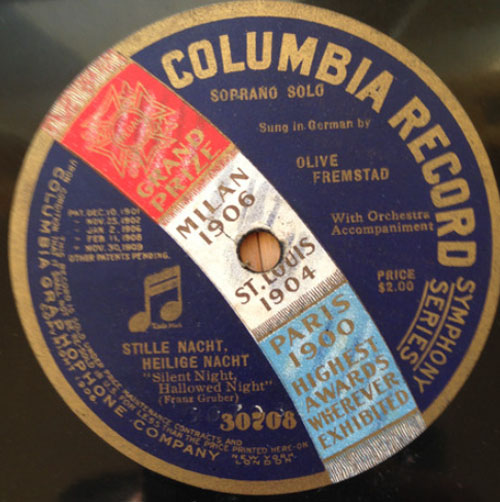
"Stille Nacht,
Heilige Nacht" Sung by Olive Fremstad, Columbia Record No.
A-876, Recorded April 1912.
For examples of Olive Fremstad as
a phonograph recording artist as seen in phonograph advertisements
and other popular culture ephemera see Olive
Fremstad - Recording Artist and Willa Cather Prototype.
Other Phonograph
Connections
Most of the other phonograph connections
in The Song of the Lark are referenced music. Music wasn't
being played by phonographs in the story but some of those referenced
songs were at the time being made into phonograph records (which
can be heard on this page by clicking LISTEN).
At the end of this page a Spotify
Playlist of "Music in Willa Cather's The Song of the
Lark" created by the National
Willa Cather Center can be used to hear contemporary recordings
of the book's referenced music.
Referenced Songs that were made
into phonograph records
'La Golondrina'
As Thea and the doctor approached
the 'dobe houses, they heard a guitar, and a rich barytone voice—that
of Famos Serreños—singing "La Golondrina."
Recording history of "La Golondrina."
“The earliest known recording is
probably that made by the U.S. Marine Band in either 1896 or 1897
on a two-minute brown wax cylinder for the Columbia Phonograph Company,
cylinder number 407,” according to a blog devoted to a history of
the song. The earliest vocal recording, the author asserts, was
made in 1898 by Arturo Adamini on Edison cylinder 4234. Adamini,
an Italian tenor, later recorded the song as a 7-inch, 78-rpm disc
for the Berliner label. (4).
For an interesting 100-year history
of recording this song see Strachwitz
Frontera Collection 'La Golondrina': A Song that Soars Across
Centuries and Crosses Cultures.
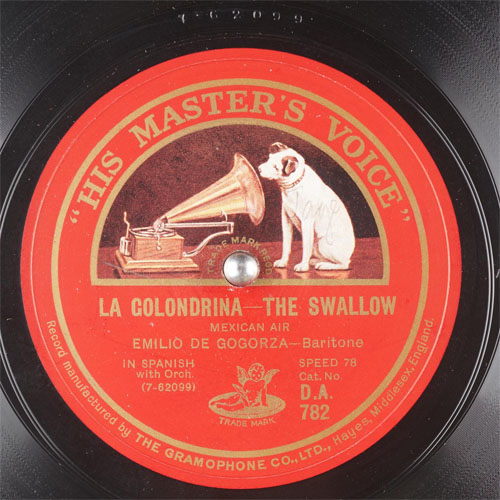
LISTEN
to 1926 HMV Record "La Golondrina" sung by bartione Emilio
de Gogorza (Courtesy Internet Archive).
'Just
Before the Battle, Mother'
This popular song was a "popular
song during the American Civil War, particularly among troops
in the Union Army."
Upping, the trainer, talked to
one and another: "Lily's all right for girl parts," he insisted,
"but you've got to get a girl with some ginger in her for this.
Thea's got the voice, too. When she sings, 'Just Before the Battle,
Mother,' she'll bring down the house."
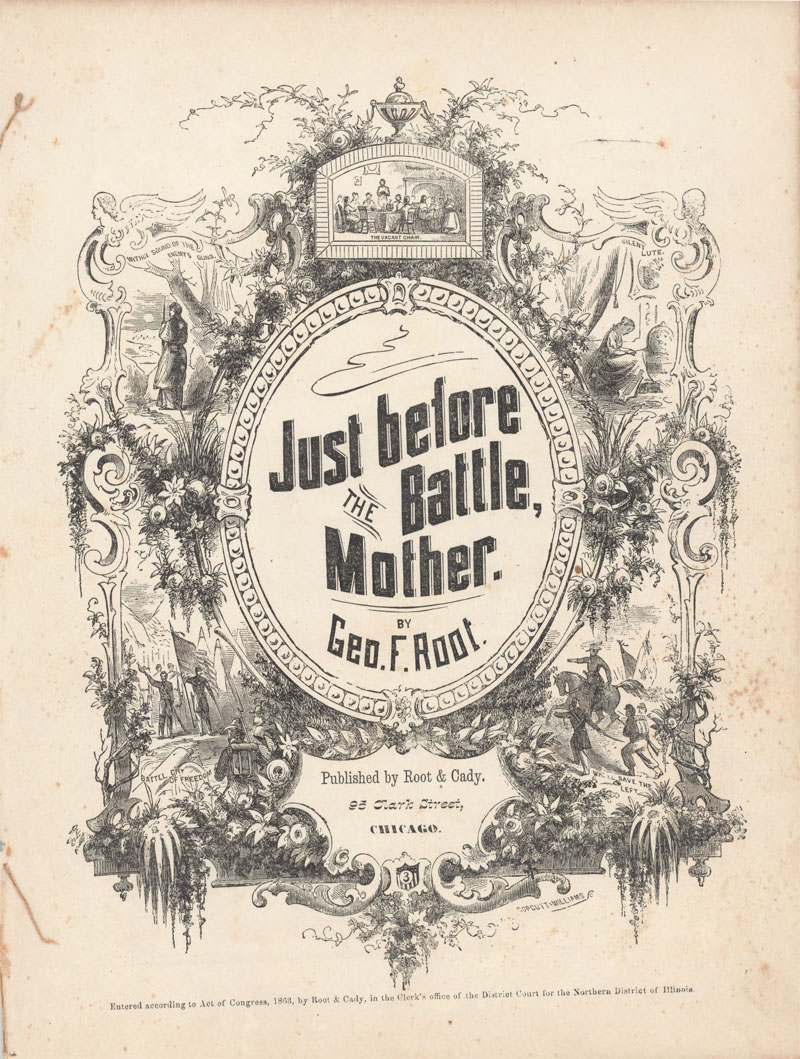
Just before the Battle,
Mother by Geo. F. Root, Published by Root & Cady, Chicago,
1868 (Courtesy Giovannoni-Sheram Collection).
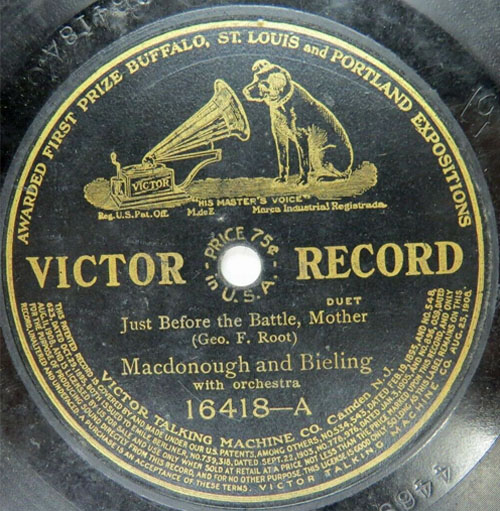
LISTEN
to Just Before the Battle, Mother sung by Macdonough and Bieling,
Victor Record 16418-A, circa 1909.
'Come, Ye Disconsolate' and
'The Ninety and Nine'
Thea sings "Come, Ye Disconsolate"
and "The Ninety and Nine."
When the clock struck nine, Thea
said she must be going home.
Harsanyi rose and flung away his
cigarette. "Not yet. We have just begun the evening. Now you are
going to sing for us. I have been waiting for you to recover from
dinner. Come, what shall it be?" he crossed to the piano.
Thea laughed and shook her head,
locking her elbows still tighter about her knees. "Thank you,
Mr. Harsanyi, but if you really make me sing, I'll accompany myself.
You could n't stand it to play the sort of things I have to sing."
As Harsanyi still pointed to the
chair at the piano, she left her stool and went to it, while he
returned to his chaise longue. Thea looked at the keyboard uneasily
for a moment, then she began "Come, Ye Disconsolate," the hymn
Wunsch had always liked to hear her sing. Mrs. Harsanyi glanced
questioningly at her husband, but he was looking intently at the
toes of his boots, shading his forehead with his long white hand.
When Thea finished the hymn she did not turn around, but immediately
began "The Ninety and Nine."
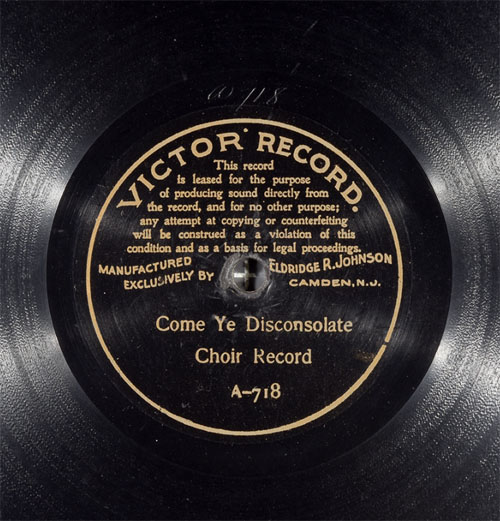
LISTEN
'Come, Ye Disconsolate,'
Choir Record, Victor Record A-719, Recorded March 11, 1901 (Courtesy
i78s.org).
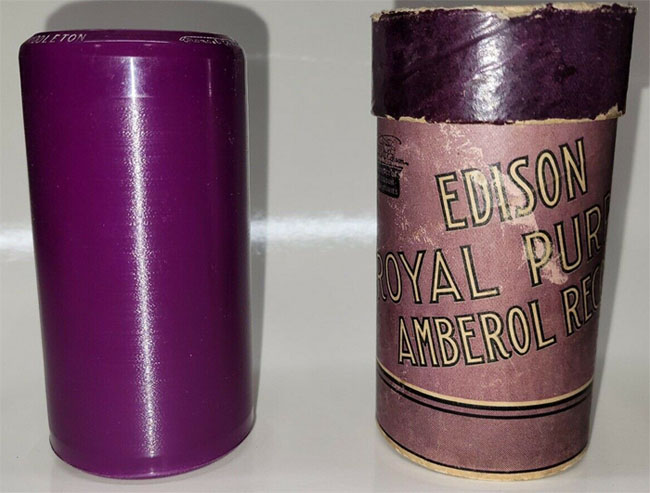
LISTEN
'The Ninety and Nine,' Edison Royal Purple 4-minute cylinder
record 29016 sung by Christine Miller, Recorded November 3, 1916
(Courtesy i78s.org).
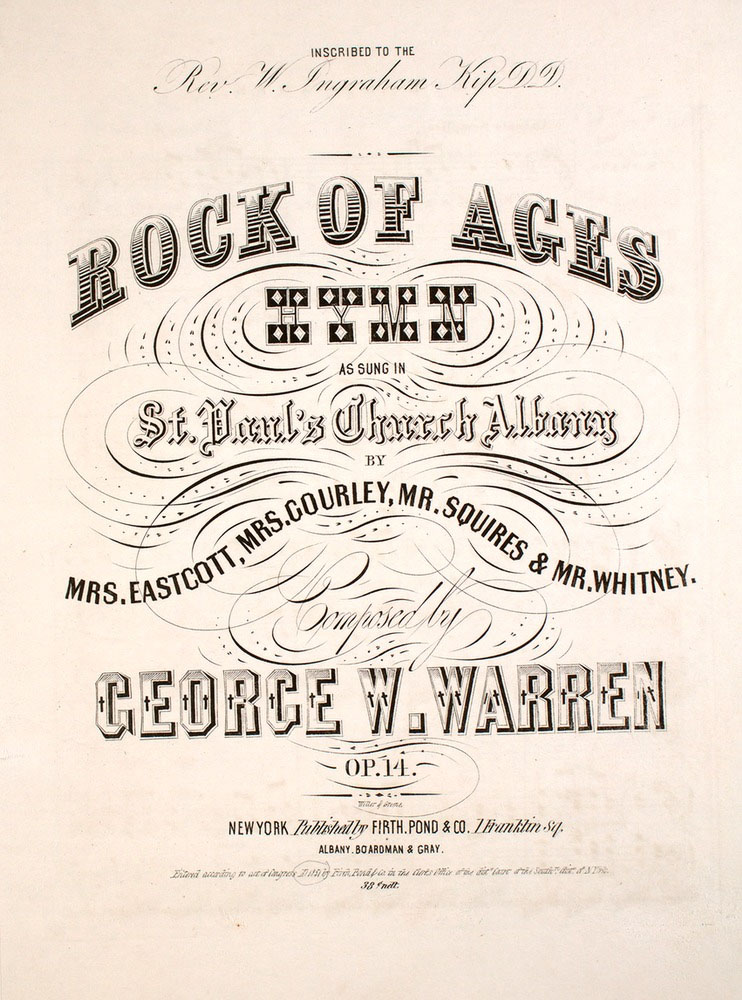
Rock of Ages, Composed by
George W. Warren, Published by Firth, Pond & Co., New York,
1851. (Courtesy The
Lester S. Levy Collection of Sheet Music, The Sheridan Libraries,
Johns Hopkins University).
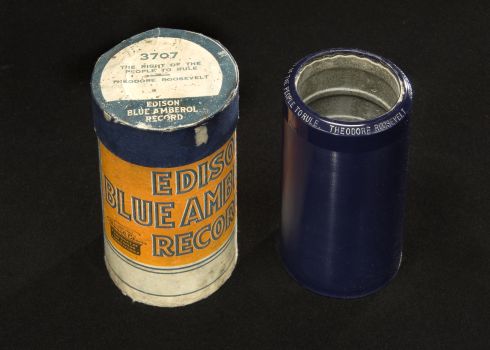
Rock
of Ages, Edison Mixed Quartet, 4-minute Edison Blue Amberol
Record No. 1633, recorded September 23, 1912 (Courtesy i78s.org).
Music
in Willa Cather's The Song of the Lark
National Willa Cather
Center - Search on Spotify Playlist
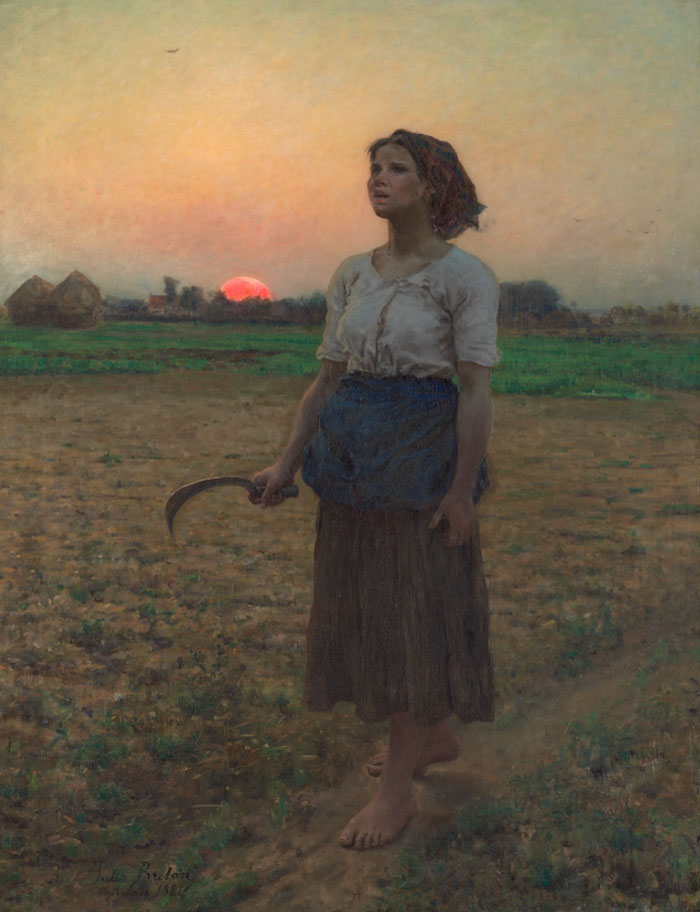
"The Song of the Lark,"
oil on canvas by Jules Adophe Breton, 1884 (Courtesy The Art Institute
of Chicago and Henry Field Memorial Collection).
For an overview of six Cather prototypes
who made phonograph records visit Willa
Cather’s Prototypes Who Were Recording Artists.

Phonographia
|












